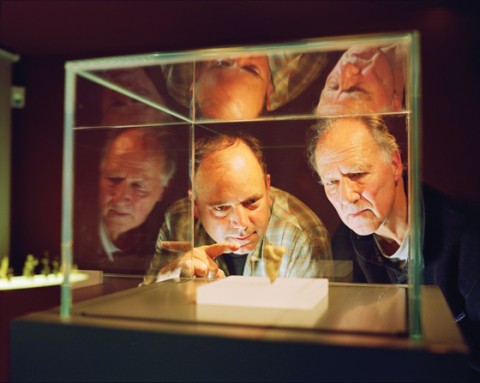Cave of Forgotten Dreams: Directed by Werner Herzog

The preponderance of 3D feature films these days represents both a desperate bid to draw audiences away from home entertainment centers into theaters and an excuse to extract even higher admission prices. Werner Herzog's hypnotic documentary Cave of Forgotten Dreams—which takes us into the Chauvet Cave, where the oldest paintings known to humankind were discovered in 1994—is the first movie to suggest a convincing reason for the invention of 3D cinema.
As Herzog's camera explores the depths of the cave, located in southern France, the exquisite images on the walls—some charcoal-colored, some in burnt ochre—appear to undulate. The fact that they're painted on protruding bumps of rock and in recesses lends them a three-dimensional quality, and the photographic process underscores and echoes this. Herzog, who narrates the film, points out that on the most beautiful panel, a Picasso-like image of overlapping horses, the artist gave each of the animals eight legs to represent movement. Herzog calls it "proto-cinema."
Read our latest issue or browse back issues.
The oldest paintings—they were not all done at the same time—go back some 32,000 years. The coexistence of images from different eras evokes the feeling of artists talking to each other across the expanse of time. And in the film, Herzog and his pared-down crew—who probe the remote reaches of the cave with a camera suspended from a stick, producing yet more images—become the most recent voices in this extraordinary conversation.
Cave of Forgotten Dreams is a ghost story set in a long-concealed sanctuary never actually inhabited by human beings, the archaeologists tell us, but used as a studio for their artwork and probably as an altar on which offerings were made to the gods. (A plateau with a lion's skull resting on it provides some of the evidence for the cave's function.) "We are locked into history," Herzog's voice-over explains, but "they are not." The 3D process becomes a metaphor for the presence of these free-floating Paleolithic painters, whose invisible hands seem to be hovering over their representations of animals and—in one amazing instance, on a sliver dripping from the roof of the cave like a stalactite—of a woman.
The film is a feat of sorcery, but the magic is almost as old as time. Almost everyone Herzog interviews has evidently been knocked sideways by it. Julien Monney, a ponytailed archaeologist who used to perform acrobatics in a circus, recalls the first time he entered the cave and the dreams he had on the nights that followed. Dominique Baffier, the cave's curator, speaks with humble admiration as she analyzes the work on the walls. Experimental archaeologist Wulf Hein plays a replica of a Paleolithic musical instrument, a flute built out of a vulture bone.
Jean-Michel Geneste, the director of the Chauvet Cave Project, describes the animal-dominated world in which the painters lived. Geneste has a warm, humorous face, frosted silvery hair, dancing eyes and a prickly white mustache; his gnomish presence makes him the natural guide for this enchanted journey, and Herzog can't get enough of him. (Neither can the viewer.) All of these experts, and the half a dozen or so others Herzog calls on, share a tone of reverent wonder. They sound like dream walkers.
You can't blame Herzog for making links between the paintings and filmmaking. In one extraordinary section, he uses a clip from "Bojangles of Harlem," the marvelous number from the 1936 musical Swing Time in which Fred Astaire pays tribute to the loose-limbed vaudeville dancer Bill "Bojangles" Robinson. Astaire dances on a stage with gigantic shadows behind him imitating his movements. Herzog uses this image to talk about the idea of the paintings as shadows of the ancient past. One of the computer programs devised by the filmmakers calls up shadowy figures of artists and animals leaving their paintings or their paw prints on these walls.
Cinematographer Peter Zeitlinger's work is prodigious, especially when he dwells on the glittering animal skulls encased in the floors of the cave. (Herzog compares these time-created sculptures to porcelain; in some shots they look like they're made of ice.) Composer Ernst Reijseger complements the visuals with a score that might have been written for Paleolithic instruments. The film is an astonishment.





